PATIENT BURDEN
Hypoparathyroidism Is Associated With a Significant Patient Burden1,2
Patients With Hypoparathyroidism Often Require Emergency Care Despite Treatment With Conventional Therapy1
79%
(n = 295/374) of patients reported hospitalization or emergency care visits due to hypoparathyroidism-related comorbidities and symptoms1

STUDY DESIGN:
A comprehensive, cross-sectional survey analyzed the burden of disease associated with hypoparathyroidism, with specific emphasis on the clinical and social impacts on patients’ quality of life (N = 374). Questions in the survey included input from clinical experts, patients, and the Hypoparathyroidism Association, and were approved by the Institutional Review Board of the University of Mississippi. The mean duration of disease was 12.6 years. Calcium either alone or in combination with other agents, including active vitamin D, was used by 92% of patients.1
Causes of Hospitalizations in Patients With Hypoparathyroidism (n = 44/130)3



STUDY DESIGN:
Baseline data were reported from a prospective observational study of longitudinal data evaluating the etiology, presentation, complications, and management of hypoparathyroidism in Canada. The study enrolled 130 patients registered in the Canadian National Hypoparathyroidism Registry from October 2014 to January 2020. The patients were between the ages of 21 to 97, and mean duration of hypoparathyroidism was 12 years. Hospitalization data were collected using a standardized form to extract patient information from medical records. All patients were taking calcium supplements, while 85% were taking calcitriol, 2% were on alphacalcidiol, and 70% were on vitamin D2 or D3 therapy. Forty four of the 130 patients required hospitalization (patients may have been hospitalized for more than one reason).3
Hypoparathyroidism Has Significant Impacts on Physical Functioning and Well-being2


STUDY DESIGN:
A study conducted for the purpose of developing a new, disease-specific measure of the impacts of hypoparathyroidism on functioning and well-being utilized interviews from 5 clinical experts and 42 patients in the United States to identify impact domains of the disease.2


